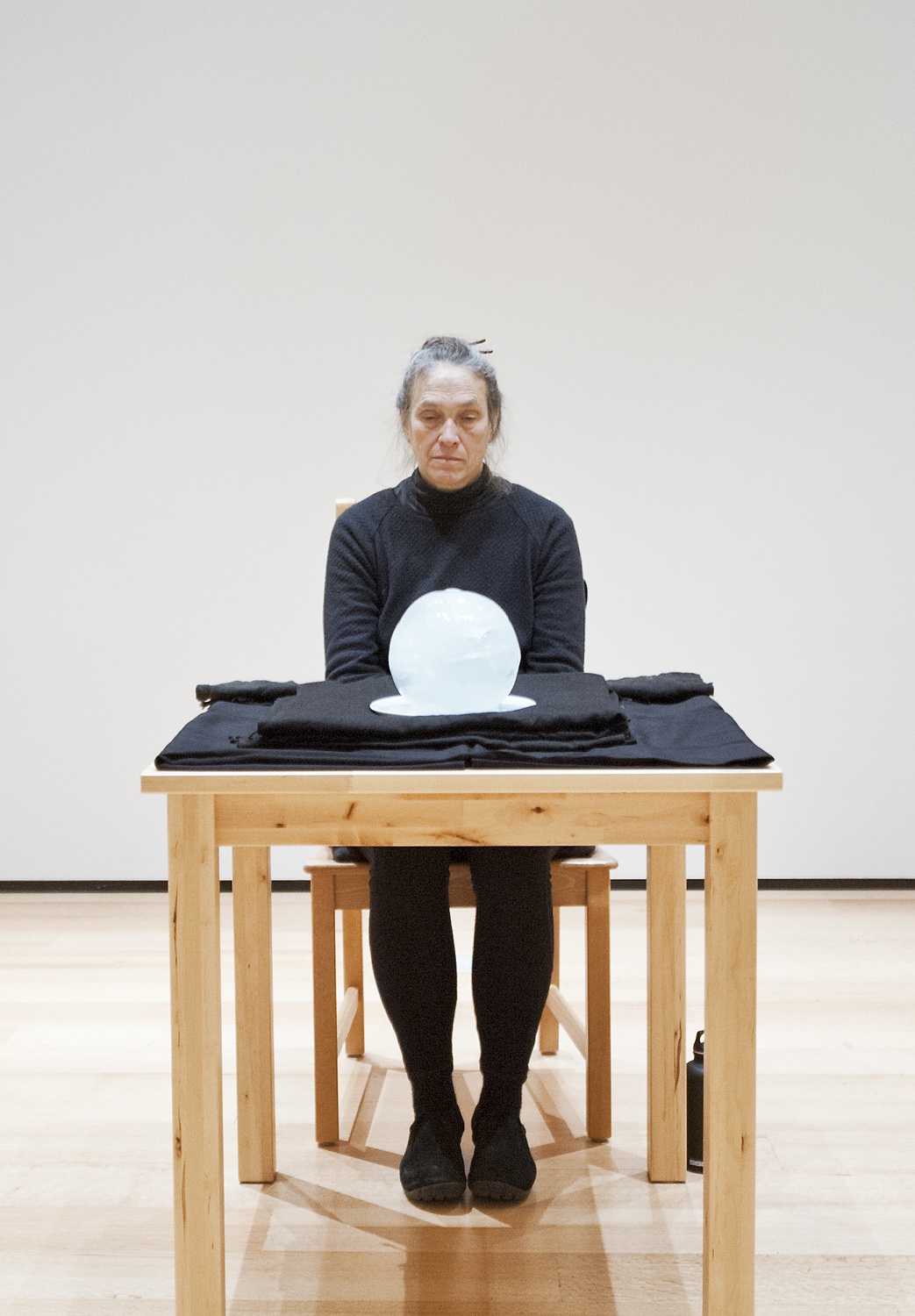
News
Progressive Labor Party Organizes Solidarity March With Harvard Yard Encampment

News
Encampment Protesters Briefly Raise 3 Palestinian Flags Over Harvard Yard

News
Mayor Wu Cancels Harvard Event After Affinity Groups Withdraw Over Emerson Encampment Police Response

News
Harvard Yard To Remain Indefinitely Closed Amid Encampment

News
HUPD Chief Says Harvard Yard Encampment is Peaceful, Defends Students’ Right to Protest
Marilyn Arsem Explores Time in New MFA Exhibit

“We’re all kind of performing in an art museum,” says Liz Munsell, assistant curator of contemporary art and special initiatives at the Museum of Fine Arts. “There’s all kinds of protocols and rituals wrapped up in the experience of being a body and space in the museum. So live art...really isn’t that foreign to a museum environment.”
Late on Nov. 13, the activity in the MFA attested to Munsell’s statement. Staff waited at the museum’s front desk, ready to greet any straggling visitors trickling in or out. Security stood guard in the galleries. And performance artist Marilyn Arsem was at work in her own place—an exhibit called “100 Ways to Consider Time.” As visitors walked in and out of Gallery 261, Arsem, wrapped in a black shawl, sat in a wooden chair facing a rock illuminated by a black lamp. When the clock hit 9:30, Arsem lifted her head from the deep trance she seemed to be in and rewrapped her shawl. She stood up, turned off the lamp, and headed to the corner of her exhibit’s room where a calendar hung. Arsem ripped off the day’s date, folded it, and walked away.
For 100 days, Arsem will be doing something similar to—but not quite the same as—Friday night’s performance for six hours a day. “There’s infinite possible positions that she may take,” Munsell says of the exhibit. “Generally every day is focused on a different action, which for Marilyn is a different way to consider time.”
Frequently, Arsem is still. She may lie on the ground, framed by lines of blue tape, with different stones resting in a line on her body. She may sit at a table, staring at melting ice. Or she may move slowly and purposefully through the space, inviting the audience to join her as well. “She’s asking us to sit with her,” Munsell says. When Arsem is in the exhibit, people can walk in and out, or they can sit with her for half an hour or more, something some visitors have done before. “People are really looking for an excuse to slow down.”
This break from a frantically moving culture is represented not just in Arsem’s beckoning presence but also in the neutral colors and natural objects that she chooses to incorporate in her work, as her environmentally conscious, minimalist aesthetic makes use of materials like cotton, stone, or water. “Our visually-oriented culture teaches us to believe that the more we see, the more we’re experiencing,” Munsell says. “And I would really say that it’s the opposite. When you’re overwhelmed by imagery you become desensitized.”
Want to keep up with breaking news? Subscribe to our email newsletter.
